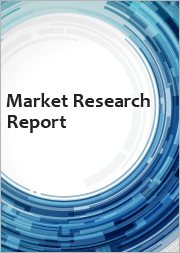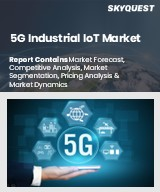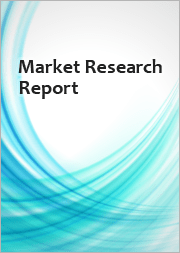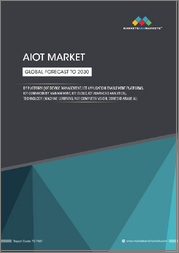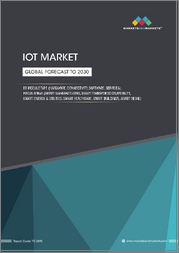
|
시장보고서
상품코드
1577450
세계의 IoT 전자태그 시장 : 응용 분야, 태그 유형, 컴포넌트, 최종 사용자 산업별 예측(2025-2030년)IoT Electronic Tags Market by Application Area (Healthcare, Logistics & Transportation, Manufacturing), Tag Type (Active Tags, Passive Tags), Component, End-User Industry - Global Forecast 2025-2030 |
||||||
IoT 전자태그 시장의 2023년 시장 규모는 30억 2,000만 달러로, 2024년에는 34억 7,000만 달러에 이를 것으로 예측되며, 복합 연간 성장률(CAGR) 14.96%로 성장하여, 2030년에는 80억 3,000만 달러에 달할 것으로 예상됩니다.
사물인터넷(IoT) 전자태그 시장은 무선 주파수 식별(RFID), 근거리 무선 통신(NFC), 블루투스 저에너지(BLE)를 이용하여 데이터 교환, 재고 추적, 자산 관리 가능 장치가 포함됩니다. 이러한 태그는 실시간 추적, 재고 관리, 소매, 헬스케어, 물류, 제조 등 업계의 업무 효율성 향상에 필수적입니다. 원활한 연결성 수요, 비즈니스 효율성 개선 요구, 스마트 인프라 확장이 이 시장의 성장을 뒷받침하는 주요 요인입니다. 클라우드 컴퓨팅과 AI의 진보로 스마트 홈과 오피스 채용이 증가하고 있는 것이 IoT 태그의 전개에 큰 기회를 가져오고 있습니다. 혁신적이고 비용 효율적이고 에너지 효율적인 태그를 개발하기 위한 R&D 투자는 미래 성장을 가속하는 데 매우 중요합니다. 그러나 엄격한 규제 기준, 데이터 프라이버시 우려, 최종 사용자의 제한된 인식, 서로 다른 플랫폼 장치 간의 상호 운용성 문제 등의 문제로 인해 시장 확대가 방해되고 있습니다. 기업은 IoT 태그의 장점에 대해 잠재적인 사용자를 교육하는 동시에 데이터 보안을 강화하고 세계 표준에 대한 컴플라이언스 확보에 주력함으로써 이러한 문제를 해결할 수 있습니다. 혁신이 가능한 분야에는 배터리 수명 연장, 데이터 암호화 개선, 데이터 캡처 및 변속기 고정밀도 등 다기능 태그 개발이 포함됩니다.협업과 전략적 파트너십은 통합 솔루션 개발을 더욱 촉진하고 기업이 진화하는 기술에 신속하게 대응하고 경쟁 우위를 확보할 수 있도록 합니다. IoT 전자 태그 시장은 역동적이며 기술 개발의 최전선에 기업을 배치하는 것은 기존의 기회를 활용하고 위험을 줄이는 데 매우 중요합니다. 시장이 성숙함에 따라 지속 가능한 솔루션과 업계 고유의 요구에 맞는 맞춤형 용도에 중점을 둔 기업은 현재와 미래 수요를 모두 충족하는 고객 중심 솔루션을 향해 혁신함으로써 경쟁 힘을 유지하고 성공을 거둘 가능성이 높습니다.
| 주요 시장 통계 | |
|---|---|
| 기준년(2023) | 30억 2,000만 달러 |
| 예측년(2024) | 34억 7,000만 달러 |
| 예측년(2030) | 80억 3,000만 달러 |
| 복합 연간 성장률(CAGR)(%) | 14.96% |
시장 역학: 빠르게 진화하는 IoT 전자 태그 시장의 주요 시장 인사이트 공개
IoT 전자태그 시장은 수요 및 공급의 역동적인 상호작용을 통해 변모를 이루고 있습니다. 새로운 비즈니스 기회를 획득할 수 있습니다. 이러한 동향을 종합적으로 파악함으로써 기업은 정치적, 지리적, 기술적, 사회적, 경제적인 영역에 걸친 다양한 리스크를 경감할 수 있을 뿐만 아니라, 소비자 행동과 그것이 제조 비용 또는 구매 동향에 미치는 영향을보다 명확하게 이해할 수 있습니다.
- 시장 성장 촉진요인
- 공급망 운영에 대한 재고 추적 및 관리 개선에 대한 수요 증가
- 고객 경험을 향상시키기 위한 스마트 소매 기술의 채용 증가
- 실시간 데이터 분석을 목적으로 한 다양한 산업 용도에서 IoT 디바이스 이용 증가
- 전자상거래 분야의 확대에 의한 효율적인 물류 솔루션에 대한 요구 증가
- 시장 성장 억제요인
- IoT 전자태그 인프라의 전개와 보수에 따른 고비용
- 시장 기회
- IoT 전자 태그를 활용한 자동 계산대, 재고 관리에 의한 소매업의 효율 극대화
- IoT 전자 태그를 활용한 스마트 농업 용도의 확대에 의한 수확량 증가나 가축의 모니터링
- IoT 전자 태그를 퍼스널 디바이스에 임베디드해, 소비자의 라이프 스타일이나 편리성을 향상
- 시장의 과제
- 기업의 IoT 전자 태그의 대규모 네트워크 관리에 있어서의 확장성의 문제
Porter's Five Forces: IoT 전자 태그 시장을 탐색하는 전략 도구
Porter's Five Forces 프레임 워크는 IoT 전자 태그 시장 경쟁 구도를 이해하는 중요한 도구입니다. Porter's Five Forces Framework는 기업의 경쟁력을 평가하고 전략적 기회를 탐구하는 명확한 기술을 제공합니다. 이 프레임워크는 기업이 시장 내 세력도를 평가하고 신규 사업의 수익성을 결정하는 데 도움이 됩니다. 이러한 통찰을 통해 기업은 자사의 강점을 활용하고, 약점을 해결하고, 잠재적인 과제를 피할 수 있으며, 보다 강인한 시장에서의 포지셔닝을 보장할 수 있습니다.
PESTLE 분석 : IoT 전자 태그 시장에서 외부로부터의 영향 파악
외부 거시적 환경 요인은 IoT 전자 태그 시장의 성과 역학을 형성하는데 매우 중요한 역할을 합니다. 정치적, 경제적, 사회적, 기술적, 법적, 환경적 요인 분석은 이러한 영향을 탐색하는 데 필요한 정보를 제공합니다. PESTLE 요인을 조사함으로써 기업은 잠재적인 위험과 기회를 더 잘 이해할 수 있습니다. 이 분석을 통해 기업은 규제, 소비자 선호, 경제 동향의 변화를 예측하고 앞으로 예상되는 적극적인 의사 결정을 할 준비를 할 수 있습니다.
시장 점유율 분석 IoT 전자 태그 시장에서 경쟁 구도 파악
IoT 전자 태그 시장의 상세한 시장 점유율 분석을 통해 공급업체의 성과를 종합적으로 평가할 수 있습니다. 기업은 수익, 고객 기반, 성장률 등 주요 지표를 비교하여 경쟁 포지셔닝을 밝힐 수 있습니다. 이 분석을 통해 시장 집중, 단편화, 통합 동향을 밝혀내고 공급업체는 경쟁이 치열해지면서 자사의 지위를 높이는 전략적 의사 결정을 내리는 데 필요한 지식을 얻을 수 있습니다.
FPNV 포지셔닝 매트릭스 IoT 전자 태그 시장에서 공급업체의 성능 평가
FPNV 포지셔닝 매트릭스는 IoT 전자 태그 시장에서 공급업체를 평가하는 중요한 도구입니다. 이 행렬을 통해 비즈니스 조직은 공급업체의 비즈니스 전략과 제품만족도를 기준으로 평가하여 목표에 맞는 충분한 정보를 바탕으로 의사 결정을 내릴 수 있습니다. 네 가지 사분면을 통해 공급업체를 명확하고 정확하게 부문화하고 전략 목표에 가장 적합한 파트너 및 솔루션을 파악할 수 있습니다.
전략 분석 및 추천 IoT 전자 태그 시장에서 성공을 위한 길을 그리기
IoT 전자태그 시장의 전략분석은 시장에서의 프레즌스 강화를 목표로 하는 기업에 필수적입니다. 주요 자원, 역량 및 성과 지표를 검토함으로써 기업은 성장 기회를 파악하고 개선을 위해 노력할 수 있습니다. 이러한 접근 방식을 통해 경쟁 구도에서 과제를 극복하고 새로운 비즈니스 기회를 활용하여 장기적인 성공을 거둘 수 있는 체제를 구축할 수 있습니다.
이 보고서는 주요 관심 분야를 포괄하는 시장의 종합적인 분석을 제공합니다.
1. 시장 침투: 현재 시장 환경의 상세한 검토, 주요 기업의 광범위한 데이터, 시장 도달범위 및 전반적인 영향력 평가.
2. 시장 개척도: 신흥 시장의 성장 기회를 파악하고 기존 분야의 확장 가능성을 평가하며 미래 성장을 위한 전략적 로드맵을 제공합니다.
3. 시장 다양화: 최근 제품 출시, 미개척 지역, 업계의 주요 진보, 시장을 형성하는 전략적 투자를 분석합니다.
4. 경쟁 평가 및 정보 : 경쟁 구도를 철저히 분석하여 시장 점유율, 사업 전략, 제품 포트폴리오, 인증, 규제 당국 승인, 특허 동향, 주요 기업의 기술 진보 등을 검증합니다.
5. 제품 개발 및 혁신 : 미래 시장 성장을 가속할 것으로 예상되는 최첨단 기술, R&D 활동, 제품 혁신을 강조합니다.
또한 이해관계자가 충분한 정보를 얻고 의사결정을 할 수 있도록 중요한 질문에 대답하고 있습니다.
1. 현재 시장 규모와 향후 성장 예측은?
2. 최고의 투자 기회를 제공하는 제품, 부문 및 지역은 어디입니까?
3. 시장을 형성하는 주요 기술 동향과 규제의 영향은?
4. 주요 벤더 시장 점유율과 경쟁 포지션은?
5. 벤더 시장 진입, 철수 전략의 원동력이 되는 수익원과 전략적 기회는 무엇인가?
목차
제1장 서문
제2장 조사 방법
제3장 주요 요약
제4장 시장 개요
제5장 시장 인사이트
- 시장 역학
- 성장 촉진요인
- 공급망 업무에서 재고 추적 및 관리 개선에 대한 수요 증가
- 고객 경험을 향상시키는 스마트 소매 기술의 도입 증가
- 실시간 데이터 분석을 위한 다양한 산업 용도에서 IoT 디바이스의 이용 증가
- 전자상거래 분야의 확대에 의해 효율적인 물류 솔루션의 필요성이 높아지고 있다
- 억제요인
- IoT 전자태그 인프라 도입 및 유지보수와 관련된 높은 비용
- 기회
- 자동체크아웃과 재고관리를 위한 IoT 전자태그를 통해 소매업의 효율을 극대화
- IoT 전자 태그를 활용한 스마트 농업 용도의 확장에 의해 수확량 증가와 가축의 감시가 가능
- 소비자의 라이프 스타일과 편의성을 향상시키기 위해 IoT 전자 태그를 개인 기기에 통합
- 과제
- 기업 내에서 대규모 IoT 전자 태그 네트워크를 관리할 때의 확장성 문제
- 성장 촉진요인
- 시장 세분화 분석
- Porter's Five Forces 분석
- PESTEL 분석
- 정치적
- 경제
- 사교
- 기술적
- 법률상
- 환경
제6장 IoT 전자태그 시장 : 응용 분야별
- 헬스케어
- 의료기기 추적
- 환자 모니터링
- 물류 및 운송
- 자산 추적
- 플릿 관리
- 제조업
- 품질관리
- 공급망 관리
- 소매
- 고객 경험 향상
- 재고 관리
제7장 IoT 전자 태그 시장 태그 유형별
- 액티브 태그
- Bluetooth
- Wi-Fi
- 패시브 태그
- RFID
제8장 IoT 전자 태그 시장 : 컴포넌트별
- 마이크로칩
- 센서
제9장 IoT 전자 태그 시장 : 최종 사용자 업계별
- 자동차
- 인포테인먼트
- 차량 진단
- 상업용
- 가전
- 스마트 홈 디바이스
- 웨어러블 디바이스
- 산업
제10장 아메리카의 IoT 전자태그 시장
- 아르헨티나
- 브라질
- 캐나다
- 멕시코
- 미국
제11장 아시아태평양의 IoT 전자 태그 시장
- 호주
- 중국
- 인도
- 인도네시아
- 일본
- 말레이시아
- 필리핀
- 싱가포르
- 한국
- 대만
- 태국
- 베트남
제12장 유럽, 중동, 아프리카의 IoT 전자 태그 시장
- 덴마크
- 이집트
- 핀란드
- 프랑스
- 독일
- 이스라엘
- 이탈리아
- 네덜란드
- 나이지리아
- 노르웨이
- 폴란드
- 카타르
- 러시아
- 사우디아라비아
- 남아프리카
- 스페인
- 스웨덴
- 스위스
- 터키
- 아랍에미리트(UAE)
- 영국
제13장 경쟁 구도
- 시장 점유율 분석(2023년)
- FPNV 포지셔닝 매트릭스(2023년)
- 경쟁 시나리오 분석
- 전략 분석과 제안
The IoT Electronic Tags Market was valued at USD 3.02 billion in 2023, expected to reach USD 3.47 billion in 2024, and is projected to grow at a CAGR of 14.96%, to USD 8.03 billion by 2030.
The Internet of Things (IoT) Electronic Tags market involves devices that utilize radio frequency identification (RFID), near-field communication (NFC), and Bluetooth Low Energy (BLE) to enable data exchange, inventory tracking, and asset management. These tags are crucial for real-time tracking, inventory management, and enhancing operational efficiency across industries such as retail, healthcare, logistics, and manufacturing. The demand for seamless connectivity, the need for improved operational efficiency, and the expansion of smart infrastructure are major factors propelling growth in this market. The increasing adoption of smart homes and offices, amplified by advancements in cloud computing and AI, presents substantial opportunities for deployment of IoT tags. Investment in R&D to develop innovative, cost-effective, and energy-efficient tags is pivotal to driving future growth. However, market expansion is hampered by issues such as stringent regulatory standards, data privacy concerns, limited awareness among end-users, and challenges in interoperability among devices across different platforms. Companies can tackle these issues by focusing on enhancing data security and ensuring compliance with global standards, alongside educating potential users on the benefits of IoT tags. Potential areas of innovation include developing multi-functional tags with extended battery life, improved data encryption, and higher accuracy in data capture and transmission. Collaborations and strategic partnerships can further foster development of integrated solutions, enabling businesses to adapt swiftly to evolving technologies and gain competitive advantage. The IoT Electronic Tags market is dynamic and positioning companies at the forefront of technological developments will be crucial to capitalizing on existing opportunities and mitigating risks. As the market matures, businesses focusing on sustainable solutions and customized applications tailored to industry-specific needs are likely to thrive, maintaining a competitive edge by innovating towards customer-centric solutions that address both current and future demands.
| KEY MARKET STATISTICS | |
|---|---|
| Base Year [2023] | USD 3.02 billion |
| Estimated Year [2024] | USD 3.47 billion |
| Forecast Year [2030] | USD 8.03 billion |
| CAGR (%) | 14.96% |
Market Dynamics: Unveiling Key Market Insights in the Rapidly Evolving IoT Electronic Tags Market
The IoT Electronic Tags Market is undergoing transformative changes driven by a dynamic interplay of supply and demand factors. Understanding these evolving market dynamics prepares business organizations to make informed investment decisions, refine strategic decisions, and seize new opportunities. By gaining a comprehensive view of these trends, business organizations can mitigate various risks across political, geographic, technical, social, and economic domains while also gaining a clearer understanding of consumer behavior and its impact on manufacturing costs and purchasing trends.
- Market Drivers
- Growing demand for improved inventory tracking and management in supply chain operations
- Rising adoption of smart retail technologies to enhance customer experience
- Increased utilization of IoT devices in various industrial applications for real-time data analytics
- Expansion of the e-commerce sector driving the need for efficient logistics solutions
- Market Restraints
- High costs associated with the deployment and maintenance of IoT electronic tags infrastructure
- Market Opportunities
- Maximizing efficiency in retail through IoT electronic tags for automated checkout and inventory control
- Expansion of smart agriculture applications utilizing IoT electronic tags to increase yield and monitor livestock
- Incorporating IoT electronic tags into personal devices for improved consumer lifestyle and convenience
- Market Challenges
- Scalability issues when managing large networks of IoT electronic tags in enterprises
Porter's Five Forces: A Strategic Tool for Navigating the IoT Electronic Tags Market
Porter's five forces framework is a critical tool for understanding the competitive landscape of the IoT Electronic Tags Market. It offers business organizations with a clear methodology for evaluating their competitive positioning and exploring strategic opportunities. This framework helps businesses assess the power dynamics within the market and determine the profitability of new ventures. With these insights, business organizations can leverage their strengths, address weaknesses, and avoid potential challenges, ensuring a more resilient market positioning.
PESTLE Analysis: Navigating External Influences in the IoT Electronic Tags Market
External macro-environmental factors play a pivotal role in shaping the performance dynamics of the IoT Electronic Tags Market. Political, Economic, Social, Technological, Legal, and Environmental factors analysis provides the necessary information to navigate these influences. By examining PESTLE factors, businesses can better understand potential risks and opportunities. This analysis enables business organizations to anticipate changes in regulations, consumer preferences, and economic trends, ensuring they are prepared to make proactive, forward-thinking decisions.
Market Share Analysis: Understanding the Competitive Landscape in the IoT Electronic Tags Market
A detailed market share analysis in the IoT Electronic Tags Market provides a comprehensive assessment of vendors' performance. Companies can identify their competitive positioning by comparing key metrics, including revenue, customer base, and growth rates. This analysis highlights market concentration, fragmentation, and trends in consolidation, offering vendors the insights required to make strategic decisions that enhance their position in an increasingly competitive landscape.
FPNV Positioning Matrix: Evaluating Vendors' Performance in the IoT Electronic Tags Market
The Forefront, Pathfinder, Niche, Vital (FPNV) Positioning Matrix is a critical tool for evaluating vendors within the IoT Electronic Tags Market. This matrix enables business organizations to make well-informed decisions that align with their goals by assessing vendors based on their business strategy and product satisfaction. The four quadrants provide a clear and precise segmentation of vendors, helping users identify the right partners and solutions that best fit their strategic objectives.
Strategy Analysis & Recommendation: Charting a Path to Success in the IoT Electronic Tags Market
A strategic analysis of the IoT Electronic Tags Market is essential for businesses looking to strengthen their global market presence. By reviewing key resources, capabilities, and performance indicators, business organizations can identify growth opportunities and work toward improvement. This approach helps businesses navigate challenges in the competitive landscape and ensures they are well-positioned to capitalize on newer opportunities and drive long-term success.
Key Company Profiles
The report delves into recent significant developments in the IoT Electronic Tags Market, highlighting leading vendors and their innovative profiles. These include Alien Technology, Avery Dennison, CAEN RFID, Checkpoint Systems, Fujitsu, GAO RFID, HID Global, Honeywell International, Identiv, Impinj, Invengo Information Technology, Mojix, Murata Manufacturing, NXP Semiconductors, Omni-ID, RF Code, Savi Technology, Smartrac N.V., Tageos, and Zebra Technologies.
Market Segmentation & Coverage
This research report categorizes the IoT Electronic Tags Market to forecast the revenues and analyze trends in each of the following sub-markets:
- Based on Application Area, market is studied across Healthcare, Logistics & Transportation, Manufacturing, and Retail. The Healthcare is further studied across Medical Equipment Tracking and Patient Monitoring. The Logistics & Transportation is further studied across Asset Tracking and Fleet Management. The Manufacturing is further studied across Quality Control and Supply Chain Management. The Retail is further studied across Customer Experience Enhancement and Inventory Management.
- Based on Tag Type, market is studied across Active Tags and Passive Tags. The Active Tags is further studied across Bluetooth and WiFi. The Passive Tags is further studied across RFID.
- Based on Component, market is studied across Microchips and Sensors.
- Based on End-User Industry, market is studied across Automotive, Commercial, Consumer Electronics, and Industrial. The Automotive is further studied across Infotainment and Vehicle Diagnostics. The Consumer Electronics is further studied across Smart Home Devices and Wearable Devices.
- Based on Region, market is studied across Americas, Asia-Pacific, and Europe, Middle East & Africa. The Americas is further studied across Argentina, Brazil, Canada, Mexico, and United States. The United States is further studied across California, Florida, Illinois, New York, Ohio, Pennsylvania, and Texas. The Asia-Pacific is further studied across Australia, China, India, Indonesia, Japan, Malaysia, Philippines, Singapore, South Korea, Taiwan, Thailand, and Vietnam. The Europe, Middle East & Africa is further studied across Denmark, Egypt, Finland, France, Germany, Israel, Italy, Netherlands, Nigeria, Norway, Poland, Qatar, Russia, Saudi Arabia, South Africa, Spain, Sweden, Switzerland, Turkey, United Arab Emirates, and United Kingdom.
The report offers a comprehensive analysis of the market, covering key focus areas:
1. Market Penetration: A detailed review of the current market environment, including extensive data from top industry players, evaluating their market reach and overall influence.
2. Market Development: Identifies growth opportunities in emerging markets and assesses expansion potential in established sectors, providing a strategic roadmap for future growth.
3. Market Diversification: Analyzes recent product launches, untapped geographic regions, major industry advancements, and strategic investments reshaping the market.
4. Competitive Assessment & Intelligence: Provides a thorough analysis of the competitive landscape, examining market share, business strategies, product portfolios, certifications, regulatory approvals, patent trends, and technological advancements of key players.
5. Product Development & Innovation: Highlights cutting-edge technologies, R&D activities, and product innovations expected to drive future market growth.
The report also answers critical questions to aid stakeholders in making informed decisions:
1. What is the current market size, and what is the forecasted growth?
2. Which products, segments, and regions offer the best investment opportunities?
3. What are the key technology trends and regulatory influences shaping the market?
4. How do leading vendors rank in terms of market share and competitive positioning?
5. What revenue sources and strategic opportunities drive vendors' market entry or exit strategies?
Table of Contents
1. Preface
- 1.1. Objectives of the Study
- 1.2. Market Segmentation & Coverage
- 1.3. Years Considered for the Study
- 1.4. Currency & Pricing
- 1.5. Language
- 1.6. Stakeholders
2. Research Methodology
- 2.1. Define: Research Objective
- 2.2. Determine: Research Design
- 2.3. Prepare: Research Instrument
- 2.4. Collect: Data Source
- 2.5. Analyze: Data Interpretation
- 2.6. Formulate: Data Verification
- 2.7. Publish: Research Report
- 2.8. Repeat: Report Update
3. Executive Summary
4. Market Overview
5. Market Insights
- 5.1. Market Dynamics
- 5.1.1. Drivers
- 5.1.1.1. Growing demand for improved inventory tracking and management in supply chain operations
- 5.1.1.2. Rising adoption of smart retail technologies to enhance customer experience
- 5.1.1.3. Increased utilization of IoT devices in various industrial applications for real-time data analytics
- 5.1.1.4. Expansion of the e-commerce sector driving the need for efficient logistics solutions
- 5.1.2. Restraints
- 5.1.2.1. High costs associated with the deployment and maintenance of IoT electronic tags infrastructure
- 5.1.3. Opportunities
- 5.1.3.1. Maximizing efficiency in retail through IoT electronic tags for automated checkout and inventory control
- 5.1.3.2. Expansion of smart agriculture applications utilizing IoT electronic tags to increase yield and monitor livestock
- 5.1.3.3. Incorporating IoT electronic tags into personal devices for improved consumer lifestyle and convenience
- 5.1.4. Challenges
- 5.1.4.1. Scalability issues when managing large networks of IoT electronic tags in enterprises
- 5.1.1. Drivers
- 5.2. Market Segmentation Analysis
- 5.3. Porter's Five Forces Analysis
- 5.3.1. Threat of New Entrants
- 5.3.2. Threat of Substitutes
- 5.3.3. Bargaining Power of Customers
- 5.3.4. Bargaining Power of Suppliers
- 5.3.5. Industry Rivalry
- 5.4. PESTLE Analysis
- 5.4.1. Political
- 5.4.2. Economic
- 5.4.3. Social
- 5.4.4. Technological
- 5.4.5. Legal
- 5.4.6. Environmental
6. IoT Electronic Tags Market, by Application Area
- 6.1. Introduction
- 6.2. Healthcare
- 6.2.1. Medical Equipment Tracking
- 6.2.2. Patient Monitoring
- 6.3. Logistics & Transportation
- 6.3.1. Asset Tracking
- 6.3.2. Fleet Management
- 6.4. Manufacturing
- 6.4.1. Quality Control
- 6.4.2. Supply Chain Management
- 6.5. Retail
- 6.5.1. Customer Experience Enhancement
- 6.5.2. Inventory Management
7. IoT Electronic Tags Market, by Tag Type
- 7.1. Introduction
- 7.2. Active Tags
- 7.2.1. Bluetooth
- 7.2.2. WiFi
- 7.3. Passive Tags
- 7.3.1. RFID
8. IoT Electronic Tags Market, by Component
- 8.1. Introduction
- 8.2. Microchips
- 8.3. Sensors
9. IoT Electronic Tags Market, by End-User Industry
- 9.1. Introduction
- 9.2. Automotive
- 9.2.1. Infotainment
- 9.2.2. Vehicle Diagnostics
- 9.3. Commercial
- 9.4. Consumer Electronics
- 9.4.1. Smart Home Devices
- 9.4.2. Wearable Devices
- 9.5. Industrial
10. Americas IoT Electronic Tags Market
- 10.1. Introduction
- 10.2. Argentina
- 10.3. Brazil
- 10.4. Canada
- 10.5. Mexico
- 10.6. United States
11. Asia-Pacific IoT Electronic Tags Market
- 11.1. Introduction
- 11.2. Australia
- 11.3. China
- 11.4. India
- 11.5. Indonesia
- 11.6. Japan
- 11.7. Malaysia
- 11.8. Philippines
- 11.9. Singapore
- 11.10. South Korea
- 11.11. Taiwan
- 11.12. Thailand
- 11.13. Vietnam
12. Europe, Middle East & Africa IoT Electronic Tags Market
- 12.1. Introduction
- 12.2. Denmark
- 12.3. Egypt
- 12.4. Finland
- 12.5. France
- 12.6. Germany
- 12.7. Israel
- 12.8. Italy
- 12.9. Netherlands
- 12.10. Nigeria
- 12.11. Norway
- 12.12. Poland
- 12.13. Qatar
- 12.14. Russia
- 12.15. Saudi Arabia
- 12.16. South Africa
- 12.17. Spain
- 12.18. Sweden
- 12.19. Switzerland
- 12.20. Turkey
- 12.21. United Arab Emirates
- 12.22. United Kingdom
13. Competitive Landscape
- 13.1. Market Share Analysis, 2023
- 13.2. FPNV Positioning Matrix, 2023
- 13.3. Competitive Scenario Analysis
- 13.4. Strategy Analysis & Recommendation
Companies Mentioned
- 1. Alien Technology
- 2. Avery Dennison
- 3. CAEN RFID
- 4. Checkpoint Systems
- 5. Fujitsu
- 6. GAO RFID
- 7. HID Global
- 8. Honeywell International
- 9. Identiv
- 10. Impinj
- 11. Invengo Information Technology
- 12. Mojix
- 13. Murata Manufacturing
- 14. NXP Semiconductors
- 15. Omni-ID
- 16. RF Code
- 17. Savi Technology
- 18. Smartrac N.V.
- 19. Tageos
- 20. Zebra Technologies






